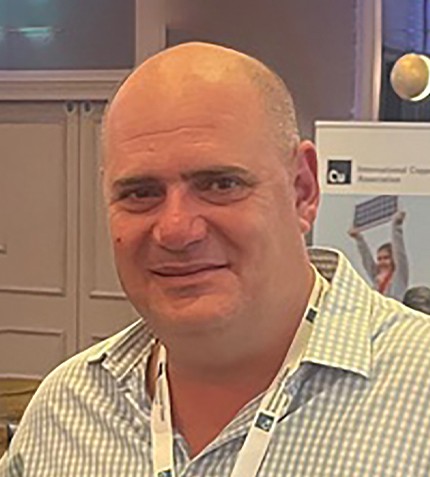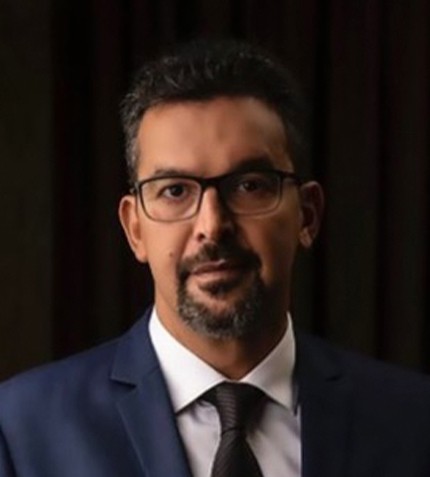
"CuMo is among the largest undeveloped copper projects in the Americas, and likely the largest undeveloped molybdenum project in the world."
Andrew Brodkey
COO, IDAHO COPPER
What led Idaho Copper to become an independent public company in 2023?
Idaho Copper Corporation (IC), formerly known as International CuMo Mining Corp., owner of the CuMo project, was formed as a subsidiary of the Canadian company American CuMo Mining Corporation in 2008. In 2023, IC separated from its parent company, which renamed itself Multi Metal Development Corporation, and IC merged with a shell company on the OTC Exchange, changed its name to Idaho Copper, and now trades under the symbol COPR.
We decided to sever ties with Canada for a number of reasons, including stringent Canadian regulatory reporting requirements. Another reason for the separation was the saturation of the Canadian market with mining companies, making it challenging for IC to distinguish itself. By contrast, the US market is orders of magnitude larger, offering better investment opportunities. Lastly, we emphasized our status as a US company, operating from and headquartered in Boise, Idaho, and not subject to foreign control. This decision also stemmed from a perceived negative connotation associated with foreign ownership of US properties.
What makes the CuMo project interesting in terms of infrastructure and size?
The CuMo project is in the Boise National Forest. This area boasts a pool of skilled workers with industrial and mining experience. The project site is easily accessible and enjoys an abundant water supply from local sources, and power is readily available.
CuMo is among the largest undeveloped copper projects in the Americas, and likely the largest undeveloped molybdenum project in the world. Our current reported and drill-indicated measured and indicated resource contains almost 4 billion lb of copper, 1.6 billion lb of molybdenum, and 170 million oz of silver, with comparable numbers in the inferred resource category.
What work have you conducted so far, and what is the importance of ore sorting for the project?
We are awaiting final approval from the Forest Service for our Plan of Operation before proceeding with the completion of drilling. A typical porphyry is characterized as disseminated, meaning minerals are somewhat evenly distributed throughout the ore body, albeit with varying grades. However, CuMo is a stock-work system, where thin veins carry the minerals, making it easier to differentiate between veins containing metals and the surrounding gangue (waste) material. This deposit type lends itself to efficient processing, using ore sorting, a proven technology that has been enhanced and gained prominence in recent years. Our waste reduction plan will likely include three ore sorting stages: bucket-level sorting using the shovel's X-ray fluorescence (XRF) sensors, penetrative scanning as ore passes on conveyors, using some form of atomic absorption scanners, and bulk particle sorting.
This approach should reduce the need for a large mill, minimize tailings, and substantially raise the head grade of the ore into the concentrator while producing the same amount of metal as if all mined material (waste and ore) was fed to a mill. Our updated PEA, expected during 2024, is targeted to reduce the overall project initial capital expenditures to a bit over US$1 billion, making the project significantly more economically attractive than it was in 2020.
What are the advantages of Idaho as a mining jurisdiction?
The CuMo project is on federal land, necessitating the completion of an Environmental Assessment (EA) for drilling activities, and an Environmental Impact Statement (EIS) under the National Environmental Policy Act (NEPA) before actual development and mining operations can commence. Currently Idaho Copper is awaiting final approval from the US Forest Service of our proposed Plan of Operations to complete our drill program.
What funding opportunities related to the US government is the company exploring?
We actively explore funding opportunities under the Infrastructure Act of 2020 and the 2021 Inflation Reduction Act (IRA). We are engaged in discussions with the Department of Energy (DOE) and the Department of Defense (DOD) regarding potential funding avenues. One viable method for securing funding is a Funding Opportunity Announcements (FOA), where companies can bid on specific projects outlined by the DOD or DOE. Another approach involves the White Paper process, where a company presents its project to access undedicated funds.
In 2024, we plan to submit a White Paper for our PFS, which may require approximately US$30 million in funding. Similarly, Idaho Copper will thereafter pursue government financing opportunities for the Bankable Feasibility Study (BFS) stage work, which could potentially cost up to $100 million. Finally, to actually construct the mine and facilities, we would hope to secure at least several hundred million dollars from these government programs to contribute to the estimated one billion dollar plus initial Capex price tag.










